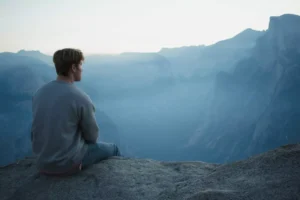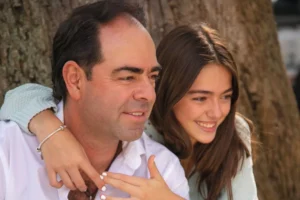My barn having burned to the ground, I can now see the moon. —Japanese Poet Masahide
For the last seven years, my husband struggled to balance his job and a rigorous Ph.D. program. Several times a day, I would ask myself, What if all the years we put into this are wasted. What if it doesn’t work out?
I kept telling myself that we would somehow get through. We needed to. We must.
And then, imperceptibly at first, the dream began to die. One day my husband just realized that he could not push forward any more. The obstacles felt insurmountable, the rewards obscure. He knew, in a strange, clear, sad way, that it was simply time to stop.
The Dip
Sometimes it can be hard to tell if you’re just facing normal obstacles on the path to success or if the dream needs to die entirely. While struggling through this decision, my husband read The Dip by Seth Godin.
According to The Dip, in every line of work there is a crisis point at which the obstacles feel insurmountable. Those who find creative ways to push through the Dip succeed where others fail. According to Godin, the most successful people are also the most persistent.
But sometimes an apparent Dip might actually be a Cul-de-Sac. Sometimes there actually isn’t a way through. Sometimes you can push and push and push and only hit … a curb. And sometimes you can exert great effort to overcome obstacles only to realize that the reality on the other side wasn’t worth the struggle to get there.
Sometimes we stay on a path long after we realize that it isn’t leading us where we want to go simply because it is embarrassing to admit that something we’ve invested time and energy into just isn’t working out the way we expected it to. Sometimes it’s easer to press on — despite the internal agony this might create — than to swallow your pride and admit that this isn’t your path.
These decisions can also take on ethical dimensions. Sometimes it feels almost immoral to change your course. But Godin offers reassuring words, “Getting off a Cul-de-Sac is not a moral failing. It’s just smart. Seeing a Cliff coming far in advance isn’t a sign of weakness. Instead, it represents real insight and bravery. It frees up your energy for the Dip.”
A Narrow Path
As we were struggling through these questions, a friend took me out to lunch. She told me that this experience was a necessary part of growing up — when you are young, you can try all sorts of things at the same time. Your interests can be broad, your energy scattered. But ideally, as you age, you begin to see your skills and your desires more clearly, and you whittle away at the non-essentials so that you can focus on the areas where you are strongest.
As I realized that this dream was dying, I started admitting it to a few trusted friends, and I discovered that we weren’t alone. My private dread no longer seemed so shameful after all. When I realized that most — if not all — people experience the death of several dreams over the course of a lifetime, the stigma started to slip away.
Another friend who has experienced the collapse of his business and the loss of his home finds hope in history. He loves to read about the rise, fall and recoveries that have occurred in countries like Germany and also to dig into the biographies of people like Abraham Lincoln who experienced multiple failures but continued to push through them to the possibilities on the other side.
“For my own survival, I had to ask myself what opportunity was being created in my life in that empty space where the dream had died,” he said. “I used to have a huge yard to take care of. But what were all my efforts in the yard distracting me from … what was the real thing that I should have been doing?”
The Next Best Thing
One of my seminary mentors used to say, “Whatever happens, just try to do the next, best thing.” By this he didn’t mean, “Do the other thing,” so much as, find the next good thing to do, whatever it is. Sometimes, when you’re grieving the death of one dream, it can be hard to see other possibilities.
If you’re not sure what to do next, consider Frederick Buechner’s advice. He says to search for your vocation at “the place where your deep gladness and the world’s deep hunger meet.” You know you’ve found your own deep gladness when you lose track of time when you’re engaged in your work. You know you’ve found work that meets the needs of an aching world when you discover ways that your work can bring comfort, help or healing to others.
What to Ask
Sometimes I’m tempted to entertain a fantasy past, the one that didn’t actually happen. I ask myself useless questions like, Would it have been easier at a different university? But these thoughts only make me feel defeated. A more constructive question is, What are we learning right now?
As soon as you begin to ask that question, all sorts of possibilities open up. Because many, many things don’t work out as we’d hoped. You can either bemoan what went wrong and pine for the way they could have been, or you can move to the next place — a place of flexibility and learning.
Look for the Seeds
Sometimes once vibrant dreams just can’t breathe on their own anymore. Sometimes you just have to take the dream off the respirator and let it die peacefully. For whatever reason, that dream is not supposed to live on indefinitely. Maybe it’s just not a good fit for your skills, maybe the timing is off, or perhaps the dream is ultimately incompatible with your soul.
As Martha Beck writes, “No course of action, even the most impressively constructed and widely recommended, can lead you home if it isn’t the path your soul wants to travel.”
It was difficult to accept the death of a dream, still more difficult to let it go. It’s been hard to push through the jungle of emotions surrounding this decision. We’ve been humbled by the process, and our egos are a bit bruised. But the dream died and we survived, and in some ways the experience wasn’t quite as bad as we feared.
When my husband called the university to withdraw from his program, he learned that he had fulfilled all of the requirements for a master’s degree. So this December, he will graduate after all.
It’s comforting to know that he will have something tangible to show for those years, but more profound is the realization that a dream can die — any dream can die — and you can stand in that barren place in the weedy garden of your own life, amongst the sagging, withered plants, in the company of your own naked soul, and if you study the ground, you might just spot some fresh green shoots pressing through. You know yourself better now. You can begin again.
Copyright 2009 Jenny Schroedel. All rights reserved. International copyright secured.










